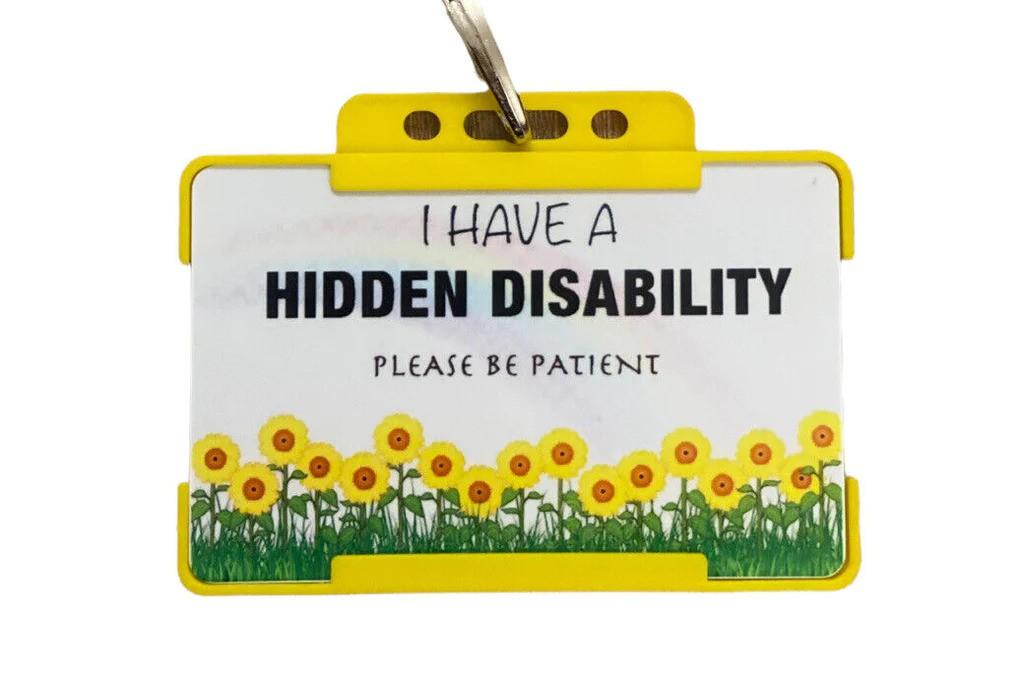In a world that often revolves around what meets the eye, there exists a significant segment of the population grappling with invisible struggles. Hidden disabilities, conditions that may not be immediately apparent but significantly impact an individual's daily life, can pose unique challenges.
Navigating public spaces, workplaces, and social gatherings can be particularly daunting for those with hidden disabilities, as they face the risk of misunderstanding and judgment. However, a subtle yet powerful tool has emerged to provide visible support for these invisible struggles the Hidden Disabilities Lanyard.
The Power of Visibility
Hidden Disabilities Lanyards have emerged as a symbol of solidarity and support for those facing unseen challenges. These lanyards, typically worn around the neck, feature a discreet design that signals to others that the wearer may have a hidden disability. While not a mandatory disclosure, the lanyard serves as a personal choice for individuals to communicate their needs without having to explicitly disclose their condition.
Creating Awareness through Visual Cues
One of the key benefits of Hidden Disability Lanyards is the creation of awareness. The visible presence of the lanyard prompts those without hidden disabilities to pause and consider the diversity of experiences around them. This simple yet effective visual cue fosters an environment of understanding and empathy, reducing the potential for judgment or ignorance.
Promoting Inclusivity in Public Spaces
Public spaces can often be challenging for individuals with hidden disabilities. Long queues, crowded areas, and noisy environments can exacerbate their struggles. The Hidden Disabilities Lanyard acts as a non-verbal communication tool, signaling to others that a person may need extra time, assistance, or understanding. This promotes inclusivity, making public spaces more accommodating for everyone.
Hidden Disabilities in the Workplace
The workplace can be a particularly challenging environment for individuals with hidden disabilities. The pressure to conform to societal norms can lead many to hide their conditions, fearing potential discrimination or lack of understanding. Hidden Disabilities Lanyards offer a solution by allowing employees to discreetly communicate their needs to colleagues and supervisors, fostering a more supportive and inclusive workplace culture.
Educating the Public
To maximize the impact of Hidden Disabilities Lanyards, education, and awareness initiatives play a crucial role. Employers, educational institutions, and community organizations can implement training programs to educate their members about hidden disabilities and the significance of the lanyard. This proactive approach not only reduces stigma but also creates an environment where individuals feel comfortable using the lanyard to seek the support they need.
Challenges and Future Developments
While Hidden Disabilities Lanyards have proven to be a valuable tool in supporting individuals with hidden disabilities, challenges still exist. Some individuals may be hesitant to use the lanyard due to concerns about potential discrimination or unwanted attention. Future developments in design, education, and advocacy will play a pivotal role in addressing these challenges and further enhancing the effectiveness of Hidden Disabilities Lanyards.
Conclusion
In a world that is increasingly recognizing the importance of inclusivity and understanding, Hidden Disabilities Lanyards serve as a beacon of support for those facing unseen struggles. These unassuming accessories carry the power to transform public spaces, workplaces, and social interactions, fostering a more compassionate and accommodating society. As we continue to strive for a world that embraces diversity, the adoption and acceptance of Hidden Disabilities Lanyards mark a significant step toward creating a more inclusive and empathetic future.
